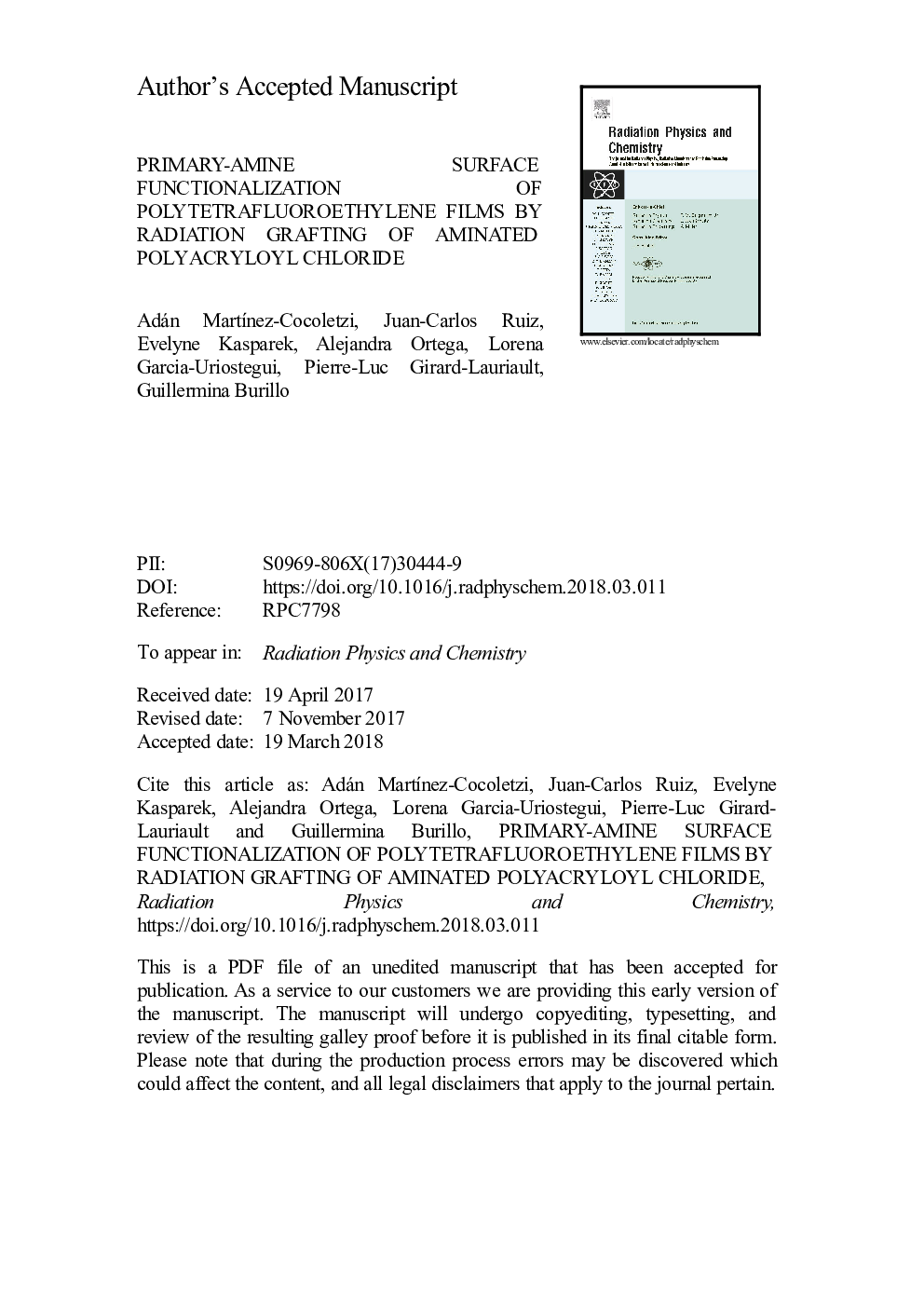| Article ID | Journal | Published Year | Pages | File Type |
|---|---|---|---|---|
| 8251338 | Radiation Physics and Chemistry | 2018 | 21 Pages |
Abstract
Amine-containing surfaces are important in cell adhesion; these surfaces are frequently synthesized using plasma reactions, which come with some disadvantages. Gamma radiation can be used to overcome these disadvantages. In this work, poly(tetrafluoroethylene) functional modification with primary amines was obtained in two steps: grafting acryloyl chloride (AC) using the direct gamma radiation method, followed by a reaction between the grafted AC and ethylenediamine. For PTFE-g-AC, the effects of the monomer concentration, absorbed dose, and reaction time were studied. The grafting percentage was gravimetrically determined using an esterification reaction with methanol, and the density of amine groups on the surface was evaluated by chemical derivatization (CD) with 4-trifluoromethylbenzaldehyde (TFBA) and X-ray Photoelectron Spectroscopy (XPS). The samples were also characterized by Fourier-transform infrared spectroscopy (FTIR), contact angle and Scanning electron microscopy (SEM). The maximum grafting of acryloylchloride obtained was 35%, using a concentration of 70% v/v and 20â¯kGy. The amine-containing surfaces showed an amine concentration of 3.3â¯at% in films with 26% of graft as determined by CD-XPS.
Keywords
Related Topics
Physical Sciences and Engineering
Physics and Astronomy
Radiation
Authors
Adán MartÃnez-Cocoletzi, Juan-Carlos Ruiz, Evelyne Kasparek, Alejandra Ortega, Lorena Garcia-Uriostegui, Pierre-Luc Girard-Lauriault, Guillermina Burillo,
